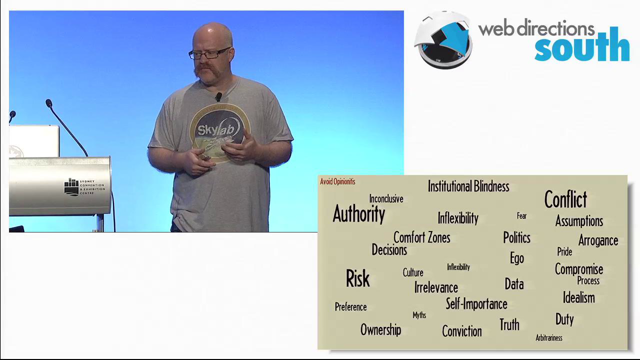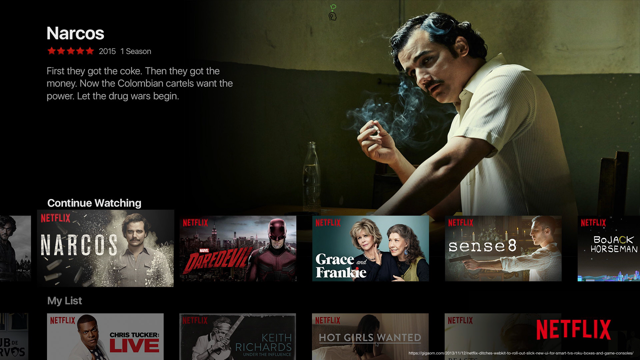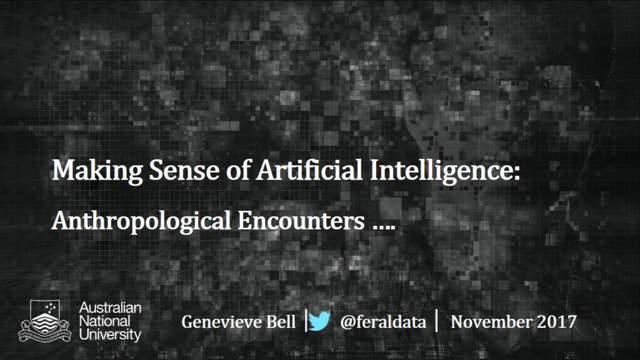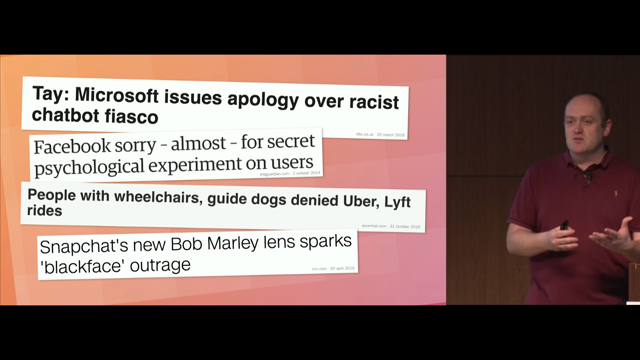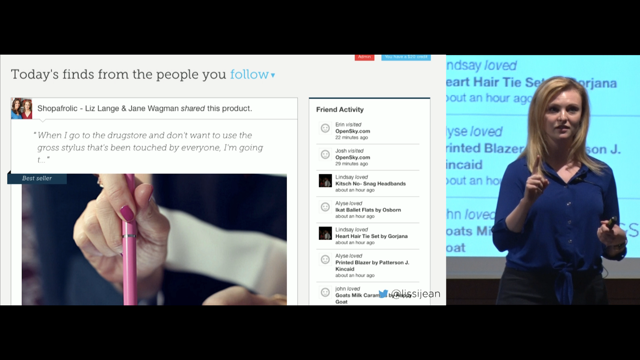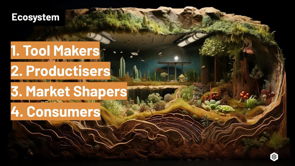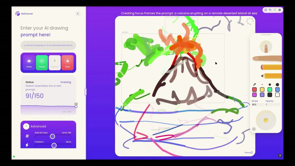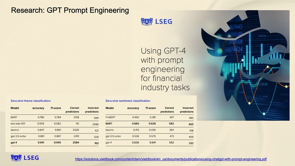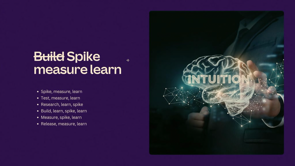
Introduction to AI in Content Creation
Ivy Hornibrook opens her talk by sharing her initial encounter with GPT-3 and its application in rewriting product pages, setting the stage for her involvement with Canva's generative AI design tool, Magic Design.
The Advent of ChatGPT and AI Disruption
Hornibrook discusses the disruptive impact of ChatGPT's release, highlighting its widespread influence on various industries and the broader implications for knowledge workers.
Background and Role at Canva
She shares her background in English Literature and Latin, her experience with startups, and her journey to Canva, where she focuses on content discovery and generative AI.
Key Lessons as a Product Manager in AI
Hornibrook reflects on her experiences and challenges in product management, particularly in navigating AI's rapidly evolving landscape and its impact on user experience.
Understanding User Interaction with AI
She emphasizes the importance of understanding how users interact with AI, particularly in the context of prompting and inspiration, and how these interactions impact product design.
Designing AI-Driven Products
Hornibrook discusses the challenges of designing AI-driven products, considering the changing nature of constraints in AI and the necessity to design for future flexibility.
Adapting to AI's Unpredictability
She highlights the need to adapt to the unpredictability of AI in terms of effort estimation, feasibility, and value creation, advocating for a focus on user problems and iterative learning.
Reflections on AI's Impact and Future Potential
Hornibrook concludes her talk by reflecting on AI's transformative potential, expressing excitement about the new opportunities and challenges it presents in the world of software and design.
Late last year, I got a message on Slack.
Ivy, some pages aren't looking great.
The text needs some work.
I tried GPT 3 and it's providing us some pretty good options.
What on earth is GPT?
I thought, and why is it rewriting my product pages?
It was early November, and I, along with most of the world, was completely unaware of what was about to come.
Then on November 30, OpenAI released ChatGPT, which quickly became the most viral app of all time.
By December, a major search engine had issued a code red.
Major tech companies saw their stock price half overnight.
And on December 3, Advent of code was won in 10 seconds.
And every knowledge worker had that moment of, How vulnerable am I to this new world of AI?
Amidst all this chaos, but in our industry and tech, what is chaos?
What is disruption?
In this chaotic, disruptive time of opportunity, so it was, that I found myself unexpectedly at the helm of Magic Design, Canva's generative AI design tool.
Me, the one who asked just weeks ago, what is GPT?
So who am I?
My name is Ivy Hornibrook.
I joined Canva just over 12 months ago in content discovery.
Before I joined Canva, I was generally at early stage startups.
I was the first or the only product manager there.
So I'm no stranger to chaos or zero to one opportunity.
But my degree is in English Literature and Latin.
I'd wager that's about as far away from AI as anyone in the audience today.
So how did I get the gig?
As mentioned, I joined Canva in the area of content discovery.
Canva is a design tool, but so much of what makes Canva, Canva, is the content that helps users to start their designs.
They come to Canva for inspiration.
They come to Canva to try and visualize and bring those ideas to life and perhaps find a way of designing that is beyond what they could imagine themselves.
Historically, Canva has done this through the 3 million templates in our template marketplace.
But templates are by nature generic, and we had a vision for the power of generative AI to take what is generic and make it specific.
To make it custom to a user's own needs, their preferences, their brand, their tone of voice.
How can we actually help users to take that first start and overcome that blank page as quickly and as productively as possible?
That was our vision.
And boy, did users love it.
But of course, it'll be no surprise to anyone it wasn't smooth sailing.
This would be a pretty boring case study, if it were.
So I'm going to focus on some of the key lessons that I learned as a PM.
It can certainly tell you that over the last kind of six months, I've had so many crises of confidence.
So I wanted to let you in a little bit on what that journey was like as we progressed.
There was one moment I still remember.
Indeed, I think it was seared into all of our team's memory.
We were doing some user research, and what we realized was that what we had built Users hated it, don't get me wrong, like they love the vision, and this being moderated research, they were very effusive in their praise, very eager to tell us and identify the potential in what they could see that we were doing.
And as much as we didn't want to see it, boy, did we not want to see it, we could not unsee the pain and the frustration and the confusion in those participants faces.
What we realized we were grappling with was that this interaction mode of prompting actually can fight against decades of learned behavior.
I'm really interested to see how Google and Bard and how Bing actually progresses.
Because that mental model of retrieving something, even from the infinite well of content, even from the infinite internet, or our three million templates, it's still a very different mental model to briefing something, to creating something, to prompting something, to willing something into existence from your words and from your specific need.
And what we realized was that in also requiring our users to focus on their individual specific needs, we were actually short cutting the inspiration process.
There was all of this pressure on the prompts.
It was as though users felt as though they needed to have this one shot attempt at inspiration.
But that's not how inspiration works.
No one comes to Canva with their design ideas fully articulated in their heads.
Inspiration is a conversation with stimulus.
And I think that what we realised in this research, probably the thing that was most kind of fundamental was, yes, AI is something new.
So we need to understand that it's going to seem foreign, and not everyone is going to be able to work with it.
But at the same time.
The problems and the value that it creates are still the same ones that users come to your product for today.
We heard it from Atomi earlier.
We heard it also at the ABC.
These aren't new problems.
This is just new ways of creating value.
The fundamental nature of human creativity doesn't change.
And so that iterative nature, this idea that our vision of "in seconds".
We are not short cutting that process of inspiration.
We're not going trying to go around it.
What we need to do is actually try and create it and facilitate it with as much delight and as little friction as possible.
And the other thing that I learned was when you're trying to design a delightful experience is.
It's no easy challenge.
I have the incredible luxury, I think, of working with some of the best product designers in the world.
It's Canva.
We have the luxury of being able to attract pretty much tap any product designer on the shoulder.
And it's a company that people would be excited to work for.
But the thing with good design is that it tends to be a solution to a problem within constraints.
I stole that from Mike Montero at UX Australia a number of years ago.
But good product design guides users down a frictionless path towards getting their job done, but it's always very mindful of the constraints that it's working within.
And what's really difficult in the AI space is that those constraints are constantly changing.
The simple fact that we heard again from Atomi, your model is changing.
The performance of a model, if it improves tenfold in a short few months of development, that has impacts on the user experience that goes way beyond loading screens.
It actually goes fundamentally to how you design the experience.
At the same time, I talked about how users really struggled with prompting.
That isn't a struggle as much that we see today.
ChatGPT has gone viral.
This idea of how to prompt is starting to become literacy out there in our community.
And so again, what we need to design and what we need to try and teach has changed.
And I think here the lesson that we take is, when we fixated on those constraints, they're so rapidly changing.
So rather than to design around today's constraints, design for the future, because today's constraints will disappear so quickly, as AI continues to progress.
And the final lesson that I have here that we took away, and this is probably the one that I found the most humbling.
I mentioned all of those crises in confidence.
We all had to learn that we just don't have any intuition in this space.
The very early principles of Lean and Agile were the idea that we are more often going to be wrong than we are to be right.
So you should get things out there and externalize to a user's signal because you can't trust your own intuition.
But I think in software, as time has gone on, we've all developed those instincts.
And sometimes, yes, we still test and we still iterate and we still learn.
But things progress with more forward and linear momentum.
And with AI, I found all that is out the window.
I can't estimate effort.
I can't estimate feasibility.
It changes all of the time.
I can't even estimate what likely.
Value I'm going to create for your user.
As a product manager, how do I prioritize?
How do I use RICE or ICE when I don't know impact and effort and confidence scores way out the window.
But I think really, if you think about it, we go back to where our disciplines are and the principles with which we approach it.
Focus on the value of the problem that you're going to solve.
Focus on kind of that real deep understanding of user motivations and the jobs that they hire your product to do and de risk those assumptions by focusing on short, small iterations, spike and learn.
That's how we've always done software.
So to bring me back the three key lessons, AI is new, but user problems aren't.
Design for the future, because today's constraints will be gone tomorrow.
And none of us I have intuition yet.
Working on Magat Canvamba, it's been truly humbling, it's been absolutely exhilarating.
One of the things that I reflect on is that when I think about Mark Andreessen's comment that software is eating the world, I've often felt like I was on the tail end of that, and I didn't really get a chance to, I don't know, that's, it's a bad analogy, to eat the world.
Because it felt like all of those novel problems had been chewed and digested already.
But now, with AI, it's like everything is new again, no one has intuition in this space, and I'm standing on the precipice of this new era, able to peer in, where AI is now eating the world, and you and I and everyone here, we get to be part of it.
And there are a whole bunch of things that obviously I can't talk about, but hopefully by the time we get to Summit, there'll be a whole lot more I'll be able to share with you then as well.
[APPLAUSE]

